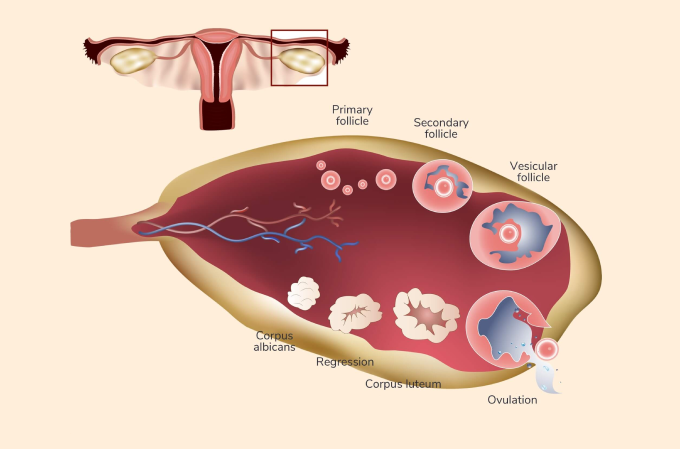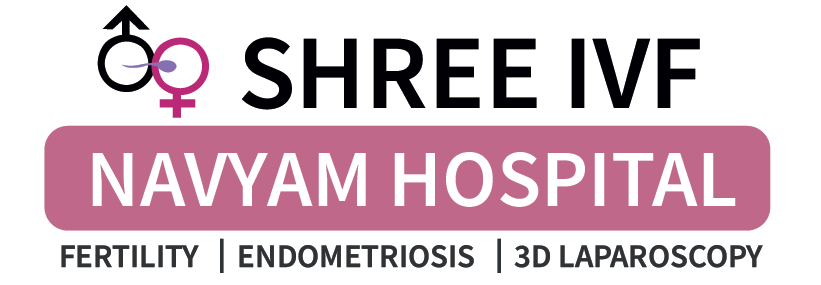
🩺 What is Ovulation Induction Treatment?
Ovulation induction is a targeted fertility treatment that uses hormonal medications to stimulate the ovaries and restore regular ovulation. It is specifically designed for women who experience irregular or absent ovulation due to hormonal imbalances. Conditions such as PCOS (Polycystic Ovary Syndrome) or other reproductive disorders can often lead to inconsistent menstrual cycles, making it difficult to conceive naturally.
The primary goal of ovulation induction is to promote the release of healthy eggs during each cycle, increasing the chances of pregnancy. By using fertility drugs, the ovaries are stimulated to develop and release mature eggs, boosting the likelihood of successful fertilization.
This treatment is particularly beneficial for women who struggle with anovulation (lack of ovulation) or those undergoing IUI or IVF procedures, as it enhances the production of multiple eggs. With regular monitoring through ultrasounds and hormone tests, doctors can track follicle growth and determine the ideal time for conception or assisted reproduction. 🌸
🩺 Ovulation Induction: A Comprehensive Guide
Ovulation induction is a fertility treatment designed to stimulate the ovaries using medications or hormonal therapy, encouraging the release of mature eggs. This treatment is primarily recommended for women who experience irregular or absent ovulation, such as those with PCOS (Polycystic Ovary Syndrome) or unexplained infertility. It is also a key part of IUI and IVF procedures, helping to produce multiple high-quality eggs for fertilization.
✅ Who Needs Ovulation Induction?
Ovulation induction is commonly recommended for:
- Women with anovulation or irregular ovulation: Those who do not ovulate regularly due to hormonal imbalances, PCOS, or other reproductive issues.
- Couples facing unexplained infertility: When no clear cause of infertility is found, ovulation induction is often used to improve conception chances.
- Women undergoing fertility treatments: It is frequently part of IUI and IVF protocols to increase egg production and enhance the chances of successful fertilization.
- Women with poor egg quality: Induction helps stimulate the ovaries to produce more follicles, improving the chances of obtaining viable eggs.
💉 Medications Used for Ovulation Induction
Doctors use various hormonal drugs to promote follicle growth and egg release:
- Clomiphene Citrate (Clomid or Serophene)
- Oral medication taken for 5 days at the beginning of the menstrual cycle.
- Dosage starts at 50-100 mg per day and may be increased if ovulation doesn’t occur.
- It works by tricking the body into believing estrogen levels are low, triggering the release of FSH (Follicle Stimulating Hormone) and LH (Luteinizing Hormone), which stimulate follicle growth.
- Letrozole (Femara)
- An alternative to Clomid, often used for PCOS patients.
- Initial dosage is 2.5 mg per day, with adjustments if ovulation fails.
- It has fewer side effects and may have a better success rate for some women.
- Gonadotropins (FSH and LH)
- Injectable hormones used when oral medications are ineffective.
- Administered over 5-12 days during the cycle.
- Stimulate the ovaries to produce multiple follicles, increasing the chances of conception.
- Often used with HCG injections to trigger ovulation.
- HCG (Human Chorionic Gonadotropin)
- Used to trigger ovulation once the follicles reach maturity (18-25 mm in size).
- Mimics the natural LH surge, signaling the body to release the egg.
🔍 Step-by-Step Ovulation Induction Process
- Stimulation Phase:
- The treatment begins with oral or injectable fertility drugs.
- These medications stimulate the ovaries to produce mature follicles carrying eggs.
- Regular monitoring through ultrasound and blood tests tracks the follicle growth and hormone levels.
- Follicular Monitoring:
- Throughout the cycle, ultrasound scans are performed to monitor follicle size and endometrial thickness.
- Follicular study helps determine the optimal time for egg release.
- Trigger Injection:
- When the follicles reach 18-25 mm in size, the doctor administers an HCG injection.
- This triggers ovulation within 36-40 hours.
- Timed Intercourse or IUI:
- Couples are advised to have intercourse during the fertile window or proceed with IUI (Intrauterine Insemination).
- For IVF, egg retrieval is scheduled shortly after the trigger injection.
🚫 Side Effects of Ovulation Induction
While ovulation induction is generally safe, some women may experience mild to moderate side effects, including:
- Bloating and abdominal discomfort.
- Nausea or hot flashes.
- Pelvic pain or tenderness.
- Fatigue or mood swings.
- Multiple pregnancies: Since ovulation induction can stimulate the release of multiple eggs, the risk of twins or triplets increases.
- Ovarian Hyperstimulation Syndrome (OHSS): A rare but serious complication where the ovaries swell and become painful due to overreaction to fertility drugs.
🌟 Benefits of Ovulation Induction
- Improved Ovulation: Helps women with irregular or absent ovulation to release eggs regularly.
- Increased Pregnancy Chances: Enhances the likelihood of conception through natural intercourse, IUI, or IVF.
- Better Egg Quality: Stimulates the production of mature, high-quality eggs.
- Treats PCOS Symptoms: Helps regulate menstrual cycles and reduce symptoms in women with PCOS.
- Cost-effective: Compared to advanced fertility treatments, ovulation induction is more affordable and less invasive.
📊 Success Rates of Ovulation Induction
The success rate of ovulation induction depends on several factors, including age, underlying fertility issues, and treatment protocol.
- Women under 35 years have a 20-25% success rate per cycle.
- Women over 35 have a slightly lower success rate, around 15-20% per cycle.
- When combined with IUI or IVF, the chances of pregnancy significantly increase.
💰 Cost of Ovulation Induction
Ovulation induction is a relatively affordable fertility treatment.
- The cost of oral medications and monitoring scans ranges from ₹10,000 to ₹20,000 per cycle in India.
- If gonadotropins and HCG injections are used, the cost may increase.
- Including IUI, the total expense can range from ₹25,000 to ₹40,000 per cycle.
✅ Testing for Pregnancy After Ovulation Induction
After ovulation induction, a pregnancy test can be taken around 2 weeks post-treatment.
- Home pregnancy tests can detect HCG in urine.
- Blood tests (Beta-HCG) offer more accurate results.
- If the treatment is successful, regular monitoring ensures a healthy pregnancy.
🌟 Key Takeaway
Ovulation induction is an effective fertility treatment for women with irregular or absent ovulation, helping them conceive naturally or through IUI/IVF. By using medications to stimulate the ovaries, it increases the chances of releasing mature eggs, improving pregnancy success rates. Though generally safe, it requires careful monitoring by fertility specialists to minimize risks and optimize outcomes. 🌸


